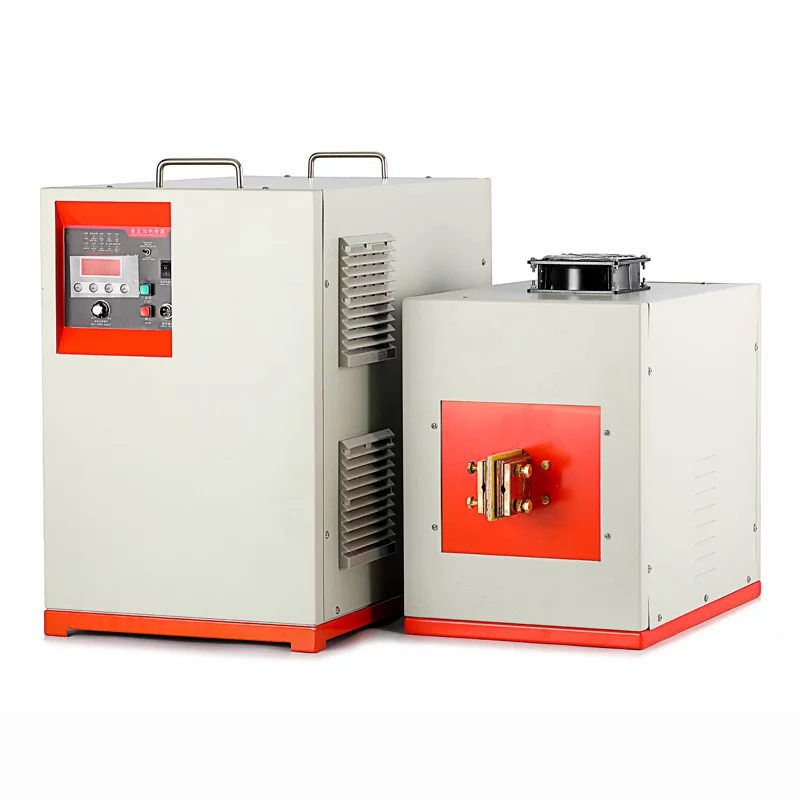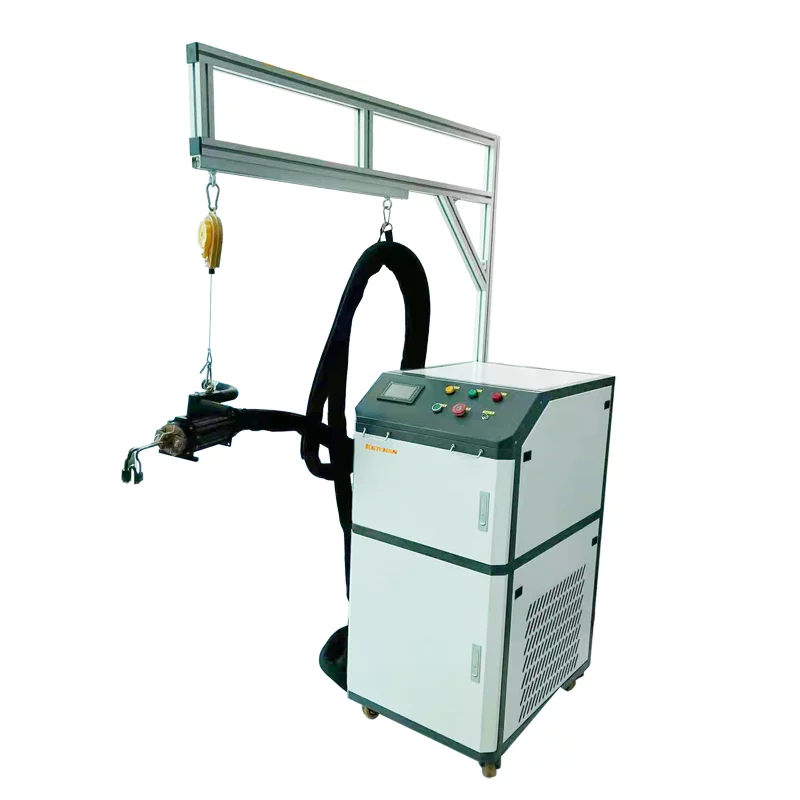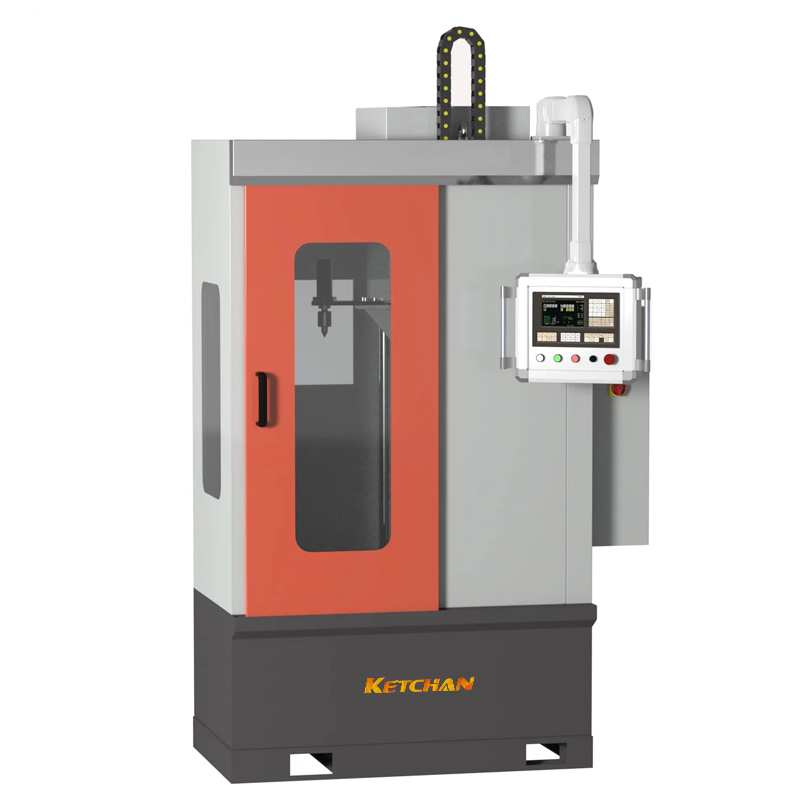Large foundry enterprises can produce tens of thousands of tons of cast iron filings every year. The recovery and utilization of cast iron filings is not only related to the economical utilization of metal resources in China but also closely related to energy consumption and environmental protection. Because of high efficiency and high quality, the recovery and utilization of cast iron filings is of great significance.
Cast-iron filings are the powdery undercutting materials in the cutting process of cast iron blanks, accounting for about 10% ~ 30% of the weight of cast iron blanks. Only Shandong Shifeng Group has about 50,000 T of cast-iron filings undercutting materials every year, which are all treated with waste materials at a low price, causing great waste. At present, the reuse of cast iron filings is generally made by simply pressing and then melting into molten iron, which not only results in a low utilization rate of cast iron filings, consumption of coking coal, and great emission pollution. Domestic with a large capacity of induction furnaces for cast iron smelting enterprises is relatively less, especially the large capacity study and application of direct melting cast iron is less, while the large capacity induction furnace while the efficiency is very high, but has poor security monitoring of the melting process, the furnace lining erosion is accelerated, induction furnace in low temperature magnetic permeability decreased melt efficiency and other technical bottlenecks, developed a complete cast iron green recycling and efficient smelting technology solutions, realizing clean production, waste, improve resource utilization is particularly urgent and important.
I. Technical difficulties and key technologies
1. Technical difficulties
(1) Oxidation of molten iron. When molten iron scraps react with oxygen in the air to form stable oxides, which will seriously harm the quality of molten iron, including elemental burning, porosity and slag inclusion, and white-mouth tendency, etc.
(2) Because the cast iron scrap is in the shape of fragmentation and contains a thin layer of iron oxide in the appearance, the bulk density is only 2g/cm3, and the iron oxide content is relatively high, it is easy to accelerate the erosion of acidic lining, and the lining thickness cannot be displayed. The lining thickness is too thin to cause furnace leakage accident, so the safety monitoring technology in the melting process is particularly critical.
(3) All grades of cast iron need accurate pre-furnace batching to ensure that the required proportion of each component of the burden is reasonable.
2. Key technologies
(1) A special chip cake machine was developed to crush cast iron chips with a bulk density of only 2g/cm3 into cake blocks to improve melting efficiency, that is, to reduce the oxidation area and improve the conductivity in the furnace.
(2) Since the melting temperature of cast iron chips is about 100℃ higher than that of ordinary bread iron, in order to ensure the safe melting, the relative change relationship between the intermediate frequency current and voltage of the electric furnace is used to calculate and display the lining thickness by computer technology, so as to prevent the furnace lining from leaking due to too thin lining.
(3) Optimize the design of power supply configuration and furnace structure, improve the utilization rate of electric energy, improve the melting efficiency and quality, and supply iron liquid rhythmically in strict accordance with the requirements of the casting line.
(4) In order to improve the oxidation resistance rate of cast iron scrap and scrap steel scrap, study the gas protection mode and control method of electric furnace melting.
Ii. Main research contents
1.Castings and forgings processing scrap and waste pre-treatment process
(1) preprocessing iron filings or chip may contain before recycling process is brought into the water and oil, if untreated, at the beginning of the furnace and smelting smoke and liquid iron absorption of gas would lead to increased of gas content in liquid iron, not only affect the casting quality, and in the process of smelting gas will also spread to inside lining, could lead to damage of induction coil. Therefore, the green recovery of iron filings should be pretreated first. Under normal circumstances, the pretreatment process first goes through the deoiling machine to remove the grease brought in during the processing. For scrap iron with cutting fluid, it can also be directly treated by roasting to remove the moisture and grease brought by cutting fluid during processing. After the centrifugal dehumidification process and rapid drying process, the moisture content is reduced to less than 1%.
(2) The pressed mass cast iron filings are the scraps of cast iron in the cutting process. The final appearance contains a thin layer of iron oxide, the natural accumulation density is about 2g/cm3, and the relative permeability is about 1.6, which is close to the permeability of air. The relative permeability of block cast iron is about 600 ~ 1000, in order to improve the permeability of charge, it is necessary to improve the overall density of cast iron filings. After repeated experiments, contrast data, and bread crumbs block can reach 5.2 g/cm3 density of left and right sides, improve the relative permeability of crumbs of pizza to 300 above, after boiling within cold crucible (< 700 ℃), the overall permeability increases obviously, compared with the direct fill in cast iron cold electromagnetic heating efficiency is improved obviously, based on the corresponding analysis and calculation, with 3000 kn hydraulic press and form a complete set of mold, we develop our own special bread crumbs machine, will be for the bulk of the cast iron by forming bread crumbs briquette.
2. Connect ipC batching with a spectrometer to accurately adjust batching
In order to improve the quality of molten iron of waste scrap and steel scrap, through the secondary development of iPC hardware and the system integration of software, we developed a microcomputer batching system, including lifting electromagnet, wireless remote control microcomputer iron distributing instrument, wireless hook sensor, rectifier control cabinet and batching operator. The metal charge is automatically distributed and transported according to the formula input in advance and is automatically weighed and adjusted digitally. At the same time, industrial computer and spectrum analyzer network, real-time data exchange, electric furnace component control module, responsible for the spectrometer analysis component automatic adjustment system. The ipC batching system, based on the components obtained from the network analysis, feeds back to the automatic feeding equipment to adjust the required components of the burden, fast and accurate feeding. Batching data can be stored for three months with a USB interface, which can read the data and transfer it to the office computer for management and printing. It can also upload batching data to the computer online and send it to the enterprise ERP via LAN to accept the new formula sent by the computer. In this way, the electric furnace batching is computerized, the error is automatically compensated, and the feeding data is automatically printed, which reduces the blindness of batching.
3. Online monitoring system for the melting of cast iron scrap in an electric furnace to realize online monitoring of lining thickness
The variation of lining thickness can be described by the variation curve of the operating impedance of a dry reaction furnace system. Under the melting condition of molten iron in the furnace, the operating impedance decreases with the decrease of lining thickness. The operating impedance can be calculated by on-line detection, and the lining thickness variation can be detected on-line. This paper analyzes the current situation of furnace lining thickness monitoring, and by establishing the mathematical model of induction furnace, theoretically analyzes the distribution of the internal magnetic field of electric furnace, the relationship between charge impedance, charge induction current, and magnetic field strength and lining thickness, the relationship between charging induction current and input current, and the relationship between operating impedance and lining thickness.
It can be seen that within a period of normal operation, the operation impedance curve of the furnace changes within a certain range and gradually decreases. After repeated monitoring and observation, it was found that the operating impedance curve of the system was not less than 0.5 within one cycle of normal operation, so 0.5 was set as the lower limit of alarm. When the lining coefficient suddenly decreases, far below the lower limit, it indicates that the lining is corroded seriously or there is a furnace leakage accident, which needs timely repair; If the lining coefficient decreases gradually and is lower than the lower limit, it indicates that the lining becomes thinner in a large area and cannot continue to be used, so it needs to be knocked out and rebuilt.
Based on the data collected on-site, a method of monitoring the thickness of the lining with the curve of operating impedance was put forward. The on-line monitoring and monitoring display of lining thickness provided a guarantee for the safe operation of a large-capacity of furnace. Compared with the traditional contact alarm device, this method not only realizes the alarm of leaking furnace but also can warn the danger of large area thinning of the furnace lining.
4. Adopt electric melting gas protection method and control method to improve the oxidation resistance rate
In order to comprehensively improve the oxidation resistance rate of electro smelting, we focused on the study of gas protection methods and control methods, respectively tested the protective effects of different gases on the melting of cast iron, considering the application cost of inert gas, and finally determined the gas protection scheme of nitrogen and carbon dioxide.
(1) Nitrogen and carbon dioxide gas to metal melting has a good protection characteristic, the use of sealed gas injection and other ways, so that the melting furnace cavity and air basic isolation, and the use of automatic control technology, reasonable control of the feeding and gas injection relationship, so that the full use of protective gas.
(2) the use of programmed control, reasonable set heating curve, so that the cast iron, steel chip oxidation rate is the lowest.
(3) Using residual oxygen detection technology, automatic control of protective gas injection volume.
5. Develop medium frequency furnace with a large capacity to realize low energy and low discharge smelting
In traditional coreless induction furnace melting, casting process, in order to make the continuous supply of iron liquid, usually need to configure two or more than two sets of independent transformers, intermediate frequency power supply and induction furnace, one set of full power smelting, another set of often need to heat preservation in small power load dumping iron in time, this kind of independent electrical transmission method makes the transformer power factor is lower, for the large volume of more than 5 t induction furnace melting, casting system, especially the problem of power factor lower. Therefore we have designed a new kind of coreless induction furnace is a large capacity “Yi Tuo 2” electrical transmission method, by two of induction furnace for melting iron liquid at the same time, according to the rated power of smelting induction furnaces for each independent of form a complete set of intermediate frequency power supply respectively, two medium frequency power supply share a rectifier transformer, the first induction furnace according to the rated power of smelting operation, the second stage induction furnace according to the rated insulation power operation, rectifier transformer has a capacity of sum of the power of two induction furnace, runtime and configure the rectifier transformer online monitoring device output power, according to the situation of the transformer output power, manual or automatic regulation two electric power distribution, Prevent rectifier transformer from overload operation. Running according to this scheme, the transformer has a high power factor. It not only realizes the orderly supply of molten iron but also achieves the goal of increasing the power factor and reducing energy consumption.
Compared with the original technology (see Figure 3), the rectifying transformer output power on-line monitoring device configured during operation can monitor the transformer output power on-line by using the method of current sensor or power sensor through the now mature analog and digital electronic technology. The device is simple in structure and reliable in operation.
6. Study the re-melting and molding automatic butt joint technology of cast iron filings
Aiming at the contradiction between the iron liquid coming out of the furnace and the casting process of the automatic molding line after the electric furnace smelting of large tonnage, the automatic thermal insulation casting process equipment was developed. The large iron liquid was transferred to the thermal insulation casting equipment and supplied to the molding line according to different production beats, so as to realize the flexible connection between the electric furnace smelting and the automatic molding. Low energy consumption (power consumption per ton of molten iron shall not exceed 580kW•h); High efficiency (only 45min per furnace), emission reduction (fully closed, wet dust removal and bag filter); Production system, daily processing of cast iron scrap, steel scrap 300T regeneration capacity.
Iii. Test verification
(1) cast iron scraps, scrap steel scraps, and scraps are directly molded into a chip cake with a density of > 5t/m3 through pressure to improve the relative permeability, improve the melting efficiency and reduce lining erosion.
(2) Based on the operation impedance detection principle of induction furnace, industrial control machine and configuration software are adopted to realize the on-line detection of lining thickness and eliminate the safety hidden danger caused by the furnace lining corrosion caused by melting cast iron scrap in an induction furnace.
(3) Through the secondary development of IPC hardware and software system integration, ipC and spectrum analyzer network, real-time data exchange, so as to achieve the cast iron scrap, scrap electric furnace batching microcomputer, the error of about 1%, automatic compensation, accurate batching.
As monitoring and management computers, industrial PC are connected with an iron distribution system (wireless), feeding vehicle control system, and spectral analyzer through the communication port. It receives batching data, spectral analysis data, and feeding status, and monitors the batching process in real-time. The system software can also compare the requirements of iron leaf composition with the actual analysis results, and put forward the optimized formula according to the charge composition and purchase price.
(4) The high-voltage measuring cabinet adopts a digital power meter, which sends signals to the electric furnace computer control system through serial communication for total power monitoring and distribution.
(5) Medium frequency induction furnace smelting process is applicable to a wide range of gray cast iron, vermicular cast iron, ductile cast iron, the production of high requirements of vermicular cast iron cylinder head, cylinder block, as well as high-performance bainitic ductile cast iron crankshaft, gear, and other parts.
4. Energy consumption assessment
According to GB/T15911-1995 “industrial electric heating equipment and energy saving detection methods”, power stations to the wind group, cast iron green recycling technology for monitoring, after electrical furnace smelting iron liquid of technical renovation, available each year 100000 t cast iron (produced and outsourcing cast iron) directly to replace iron, high grade of bread production HT250 and nodular cast iron, liquid iron unit power consumption per ton less than 600 kW h, compared with before modification to achieve emission reduction and energy saving goal:
(1) 10T one-tow and two-medium frequency electric furnaces are all replaced by cupola furnaces, reducing soot emission by 80%.
(2) Based on 300g of standard coal per kilowatt-hour and 1.35t of standard coal per ton of coke, the average saving is 50kg of standard coal per ton of liquid iron, and 19,000 t of standard coal per year.
(3) The qualified rate of casting is increased by 5.2%, and the repeated energy consumption is saved by 0.35000t standard coal.
(4) The utilization rate of cast iron scrap increases from 75% to 95%, directly saving 30,000 t of cast iron, and according to 0.6t of comprehensive iron coal consumption per ton, saving 18,000 t of standard coal.
(5) Compared with cupola smelting, electric furnace smelting reduces iron loss by 3%, saving 11,400 tons of iron per year and 6,840 tons of standard coal per year, in total saving 47,340 tons of standard coal per year. In addition, 100,000 t cast iron scraps are used to replace 100,000 T bread iron to directly produce HT250 and ductile iron pieces, which indirectly saves 72,000 T of bread iron coal consumption.
5.The promotion application and the industrialization prospect
The experimental results show that the green recovery and high-efficiency smelting scheme of cast-iron scrap is scientific and feasible, and the technological achievements of the one-tow medium-frequency electric furnace are energy-saving and environmental protection, with high resource utilization rate and remarkable industrialization effect, which meet the requirements of national science and technology support of resource-saving society, and have a wide application prospect.





